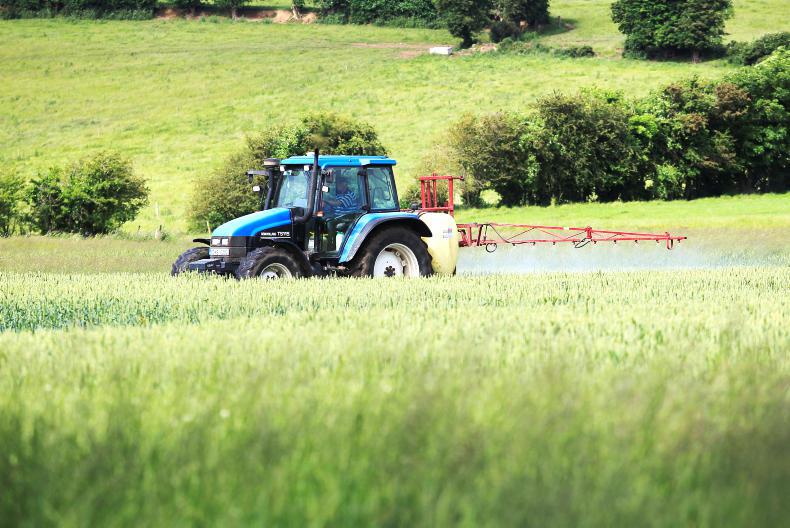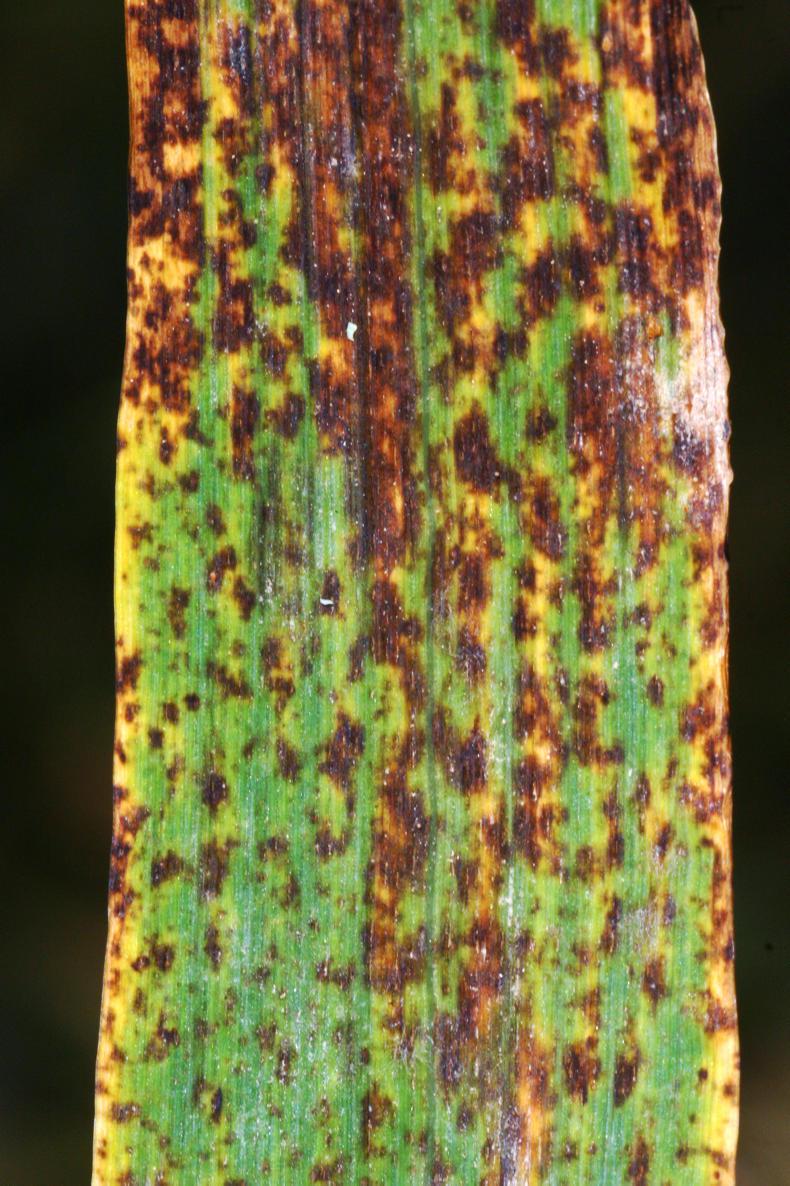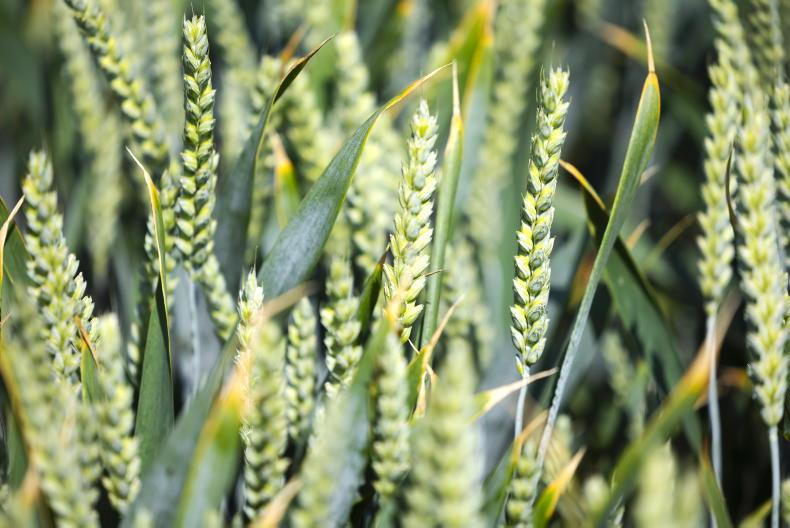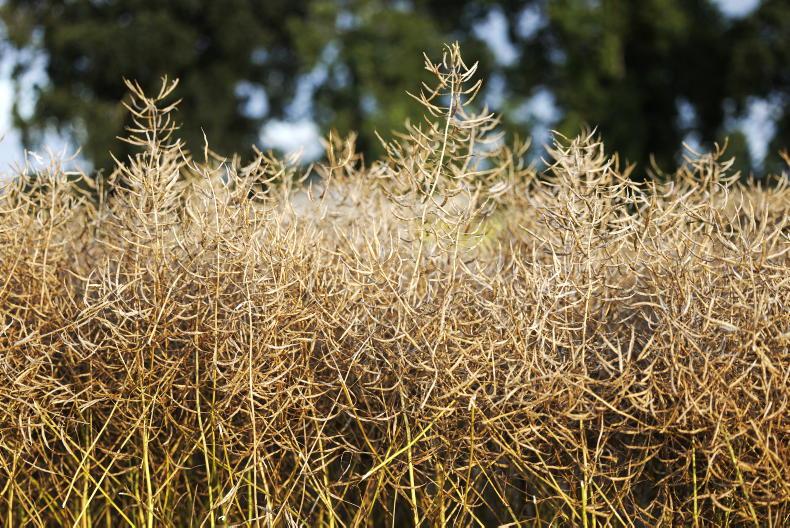While the important activity of chlorothalonil is limited to a handful of plant diseases, two of them, Septoria tritici blotch of wheat and Ramularia leaf spot of barley, are currently among the most economically destructive diseases of wheat and barley, respectively. This is the case across much of western Europe, including Ireland.
In addition to its excellent protective activity against these two diseases, as a multisite fungicide it has not succumbed to resistance and has therefore also been a key component in fungicide anti-resistance measures. And because the molecule has been available for almost six decades, it has been incorporated into a multitude of products and has been one of the most, if not the most, cost-effective fungicides for cereal disease control.
With such a positive role in cereal disease control, it is important to first explain the reasoning behind its removal.
Why did it go?
All pesticides available for use in the European Union must adhere to the strict criteria set out under the European Regulation 1107/2009. This regulation controls the placing of a plant protection product on the European market. Undoubtedly, the criteria set out in the regulation are among the most stringent operated globally.
While we often query some of the changes in criteria that were included in 1107/2009, the major adjustment hinged around the change from a risk-based assessment to one based on hazard. We must remember that these criteria are established to protect the health and wellbeing of consumers, users and the wider environment.
In relation to chlorothalonil specifically, several issues were identified as it progressed through its recent review, notably those relating to the molecule and its breakdown products and their potential contamination of groundwater, genotoxicity and risk to amphibians and fish.
Combined with gaps in information relating to the additional requirements, the European Commission proposed in March 2019 that the renewal of chlorothalonil should not be approved.
As such, we are left with a use-up period finishing 20 May 2020, after which the use of chlorothalonil in the European Union is no longer permitted.
Serious loss
In a cereal production system dominated by a maritime climate, the development of wet weather diseases such as septoria and ramularia are a major limitation to production. The loss of chlorothalonil has undoubtedly many serious implications for our ability to produce profitable crops of wheat and barley.
However, we must highlight the fact that the application of fungicides, including chlorothalonil, only form one component of integrated pest management (IPM) strategies.
Fungicides should only be applied when preventative and suppressive measures have already been taken, following an assessment of disease pressure/risk and measures that minimise the risk/spread of fungicide resistance have been taken.
Mitigating the impact of septoria
As a wet weather disease, septoria is at home in Irish wheat crops. Currently, chlorothalonil is applied at least twice to Irish wheat crops and, in some cases, up to four times. However, before alternatives to chlorothalonil and their timings are discussed, the various measures that can be employed to restrict or reduce the development of septoria, prior to the need for fungicide intervention, must be highlighted.
These are often referred to as cultural control methods and include such things as sowing date, seeding rate, fertilisation, etc. To understand the ability of each to affect disease severity and subsequently maximise their potential, it is essential to understand how they impact to achieve this control.
For instance, the primary source of early infection is wind-borne ascospores, which move readily between fields in early autumn. This means that the potential exists to limit epidemics by sowing as late as is practically possible in autumn and minimise the potential for these ascospores to find wheat host plants.
However, because Irish winters tend to be mild, even crops sown in late November, which will have lower initial infections, will still harbour sufficient inoculum to severely affect yield by the time the crop gets to grain filling. The overall infection level then will be heavily influenced by weather conditions that are conducive to the disease.
By including additional control measures such as varietal resistance, one builds in increased resilience to help reduce the risk of yield losses.
Similarly, sowing rates and fertilisation affect the crop canopy. This can either promote or restrict the movement of the rain splashed spores. However, is likely that the beneficial impact of these measures on septoria control will only occur at the extreme ends (eg low or high seeding rates) of the option range and, unfortunately, these tend to be yield limiting.
Mitigating ramularia
A far as diseases in cereal crops go, ramularia is a new disease. It was only identified as a disease of barley in the late 1990s. Applied once at late booting, chlorothalonil became the standard means of ramularia control following its development of resistance to the strobilurins in the early 2000s. While ramularia has also developed resistance to both azoles and SDHIs, in most instances these developments were not apparent in commercial crops as chlorothalonil masked any losses in efficacy.
Unlike septoria, where the lifecycle and impacts of cultural control measures are well understood, neither the disease life-cycle nor the impacts that cultural control measures such as sowing date,etc, have on suppressing ramularia are fully understood because this is a relatively new disease.
The disease often only appears after flowering which, in the absence of a reliable forecasting tool, limits the capacity to actually monitor levels of the disease prior to making a decision on whether a fungicide is required or not. Stresses are an important determinant in the levels of ramularia that may be experienced. Therefore, reducing or minimising these stresses may help alleviate disease levels. Unlike septoria, barley crops create their yield differently to wheat and keeping a crop green until the very end of the season is not as important. Therefore, if we can limit the development of ramularia its impact on yield will be minimal.
Role for alternative multisite
While matching and optimising cultural measures will reduce our reliance on fungicides for septoria and ramularia control, we also know that both diseases will react to their surroundings and that the benefit of these measures will only be as good as the weakest component. Realistically, until we have wheat and barley varieties with high levels of resistance, some level of fungicide control will be required.
This, in itself, places immense pressures on the single-site fungicide chemistries that we use, and all possible anti-resistance measures required to slow the development and spread of resistance should continue to be used. The multi-site nature of chlorothalonil was a key component in achieving this and so alternative multi-sites, such as folpet, should continue to be applied in its absence.
This doesn’t necessarily mean additional costs. For instance, in winter wheat, the cultural control measures should be regarded as the pre-stem extension (or T0) application, which up to this point was chlorothalonil. In barley, while genetic resistance to ramularia is not available, careful consideration should be given to resistance risk in the other main diseases such as rhyncho and net blotch. Doing this enables the fungicide programme to be tailored to ensure increased emphasis on ramularia control also.
As the 20 May deadline provides a buffer for 2020, growers should take the opportunity to test the alternatives on some of their crops. Equally, as autumn 2019 represents the extreme in delayed sowing, keep a close eye on what this has meant for disease development (and, of course, the wider crop development) and identify its potential limitations for future use.











SHARING OPTIONS